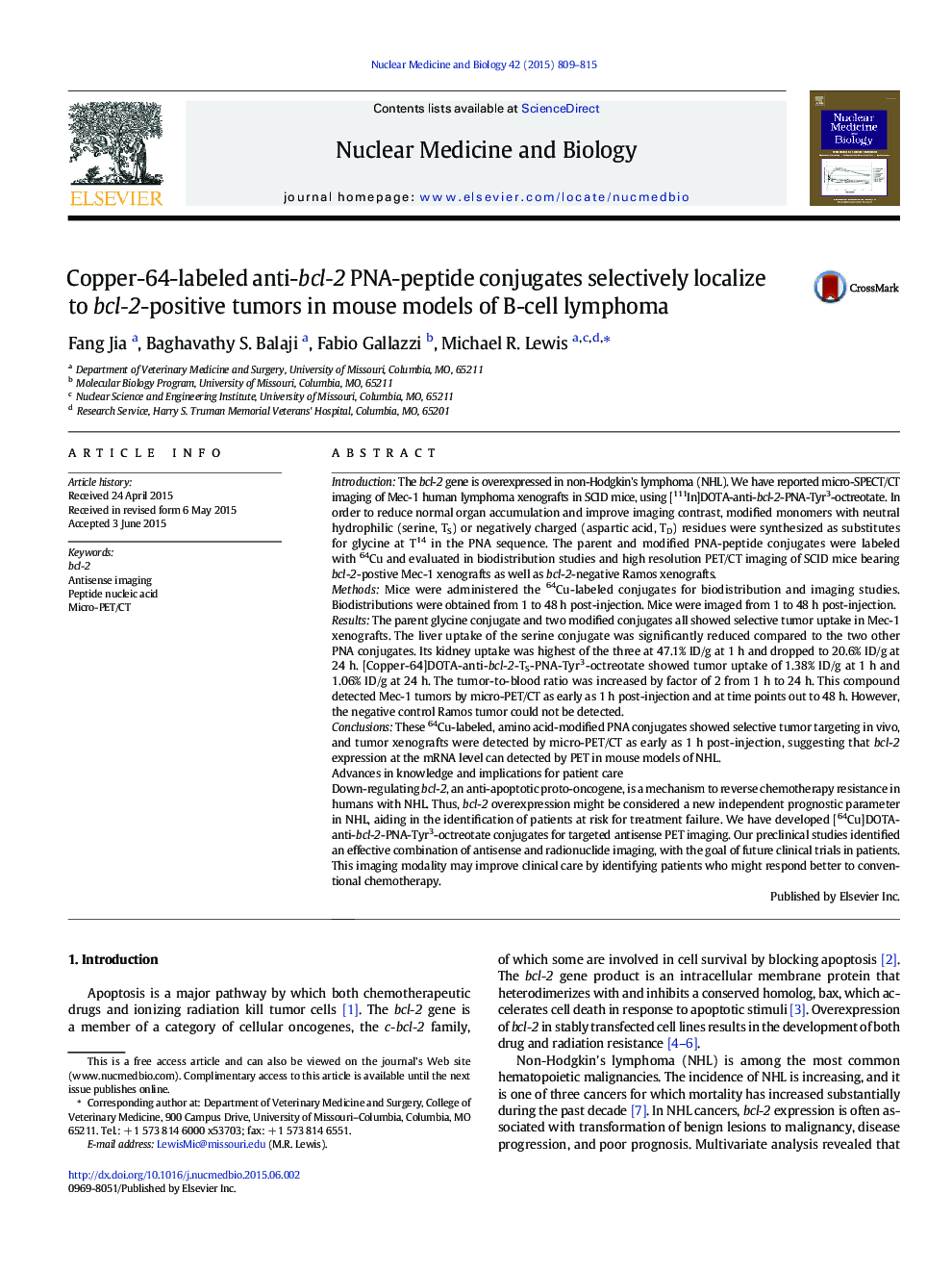| Article ID | Journal | Published Year | Pages | File Type |
|---|---|---|---|---|
| 2153321 | Nuclear Medicine and Biology | 2015 | 7 Pages |
IntroductionThe bcl-2 gene is overexpressed in non-Hodgkin's lymphoma (NHL). We have reported micro-SPECT/CT imaging of Mec-1 human lymphoma xenografts in SCID mice, using [111In]DOTA-anti-bcl-2-PNA-Tyr3-octreotate. In order to reduce normal organ accumulation and improve imaging contrast, modified monomers with neutral hydrophilic (serine, TS) or negatively charged (aspartic acid, TD) residues were synthesized as substitutes for glycine at T14 in the PNA sequence. The parent and modified PNA-peptide conjugates were labeled with 64Cu and evaluated in biodistribution studies and high resolution PET/CT imaging of SCID mice bearing bcl-2-postive Mec-1 xenografts as well as bcl-2-negative Ramos xenografts.MethodsMice were administered the 64Cu-labeled conjugates for biodistribution and imaging studies. Biodistributions were obtained from 1 to 48 h post-injection. Mice were imaged from 1 to 48 h post-injection.ResultsThe parent glycine conjugate and two modified conjugates all showed selective tumor uptake in Mec-1 xenografts. The liver uptake of the serine conjugate was significantly reduced compared to the two other PNA conjugates. Its kidney uptake was highest of the three at 47.1% ID/g at 1 h and dropped to 20.6% ID/g at 24 h. [Copper-64]DOTA-anti-bcl-2-TS-PNA-Tyr3-octreotate showed tumor uptake of 1.38% ID/g at 1 h and 1.06% ID/g at 24 h. The tumor-to-blood ratio was increased by factor of 2 from 1 h to 24 h. This compound detected Mec-1 tumors by micro-PET/CT as early as 1 h post-injection and at time points out to 48 h. However, the negative control Ramos tumor could not be detected.ConclusionsThese 64Cu-labeled, amino acid-modified PNA conjugates showed selective tumor targeting in vivo, and tumor xenografts were detected by micro-PET/CT as early as 1 h post-injection, suggesting that bcl-2 expression at the mRNA level can detected by PET in mouse models of NHL.Advances in knowledge and implications for patient careDown-regulating bcl-2, an anti-apoptotic proto-oncogene, is a mechanism to reverse chemotherapy resistance in humans with NHL. Thus, bcl-2 overexpression might be considered a new independent prognostic parameter in NHL, aiding in the identification of patients at risk for treatment failure. We have developed [64Cu]DOTA-anti-bcl-2-PNA-Tyr3-octreotate conjugates for targeted antisense PET imaging. Our preclinical studies identified an effective combination of antisense and radionuclide imaging, with the goal of future clinical trials in patients. This imaging modality may improve clinical care by identifying patients who might respond better to conventional chemotherapy.
